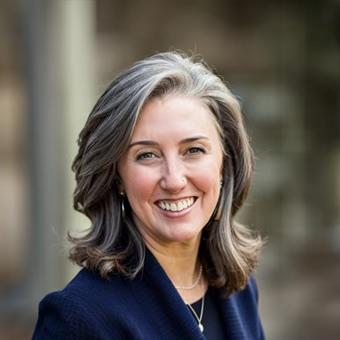FOCUS
How school leaders manage stress and stay focused
By Ayesha Farag
Categories: Leadership, School leadership, Social & emotional learning, System leadership, Teacher leadershipOctober 2019
Vol. 40, No. 5
Let’s face it: Stress is part of the job of a school leader. How can principals and other leaders manage the stress so they can be resilient and effective? We asked five experts to share their advice.
Balance urgency with purposeful action
By Ayesha Farag
Principal of Williams Elementary School in Newton, Massachusetts, Recipient of the inaugural Stephanie Hirsh Academy Scholarship from the Learning Forward Foundation
Now entering my 13th year as a principal, I have become quite familiar with the stresses and challenges of the role as well as the joys and rewards. In recent years, I’ve had a growing awareness of how my expectations for myself and the urgency I feel to act quickly exacerbate the stresses inherent in the role.
I’ve learned that it’s important to take time to slow down, reflect, and take purposeful action in order to maintain the passion, energy, and enthusiasm that fuel the important work of leadership.
I’ve found three practices to be especially helpful:
Connect with other school leaders. No one else knows the joys and challenges like others walking in our shoes. Our school leader colleagues are an invaluable source of support, ideas, resources, inspiration, and feedback. I am fortunate to work in a district with 14 supportive elementary principals. But principals can also make connections via nearby districts, professional organizations, and electronic communities.
Deliberately seek joy in the work. During the most stressful times, we tend to find ourselves distanced from the aspects of the work that inspire us most and remind us why we became school leaders. Deliberately seeking the joy in our work reconnects us with our purpose and can provide a much-needed infusion of inspiration and energy when we need it most. For example, making time to connect with students, whether in the classroom, recess, or lunch, is always a recharging experience for me.
Invest in out-of-school relationships and interests. For so many of us, the tireless work ethic that helps us be successful can also lead us to neglect relationships and interests outside of school. Protecting time to invest in our friends, families, and interests feeds and restores us as humans and re-energizes us. This is an ongoing challenge for me, but over the course of this past year, I committed to a regular group gathering with friends once a month. Though tempted to bail out at times when things were stressful, going was always the right choice. Self-care is most important during challenging times.
Keep the focus on instructional leadership
By Emily Becker
Transformation Network partner at Partners in School Innovation, San Francisco, California
When I became a principal, I took on an exponential increase in responsibility, and I didn’t know how to prioritize instructional leadership given the mountain of administrative tasks. Now as a leadership coach, I look back at my years as principal to share five things I learned about being more effective:
Lead from your “why.” Leaders often get stuck in the “how” and the “what” of the job and lose sight of their “why.” It’s important to stay grounded in your motivation for working in schools.
Invest in your own professional growth. Effective principals are made, not born. However, many principals do not take advantage of professional development provided by the district office or seek out their own professional learning opportunities. School leaders should consider acknowledging their need for continuous professional learning as a sign of strength, not weakness.
Distribute leadership by building staff members’ capacity. In most public schools, there is more work to be done than people to do it. This can leave principals feeling like they have to do everything, and instructional leadership ends up taking a back seat. When you build staff members’ capacity to handle a variety of challenges, you can focus on instruction.
Protect time to be in classrooms. If you place a high value on instructional leadership, you must have time for classroom observations and professional learning with teachers. In my coaching, I ask principals how much of the week they want to devote to these processes. Next, we consider the types of noninstructional demands that can arise and identify staff who will address them. Then the school leader communicates these roles to everyone on staff so that everyone knows what to do when a need arises and understands his or her role in protecting the principal’s time for instructional leadership.
Give yourself grace. No principal can address every challenge and meet every goal she sets for herself. Accept imperfection and recognize the many successes you do achieve. This can help you focus on your most important responsibility — upholding your school’s vision for academic achievement.
Help school leaders thrive
By Nicholas Orlowski, Director of professional learning, Grand Rapids (Michigan) Public Schools
Research on high-performing organizations has found something they all have in common: They are full of thriving employees. According to business professor Gretchen Spreitzer, thriving employees find themselves learning constantly and in ways that improve their performance. They also find work fills them with vitality and a sense of aliveness during the work day that acts as an antidote to boredom and burnout.
Most of the research on thriving comes from the business world, but I recently conducted a study on thriving among teachers, and it has implications for school leaders as well. I surveyed about 100 middle school teachers and conducted follow-up interviews with a subsample of those who scored high and low on a measure of thriving.
Thriving teachers focused on two major sources of learning and vitality: students and peers. On the learning side, thriving teachers believed they got better at their job because they got to know their students and designed instruction accordingly. They also cited the support provided by peers during PLCs and other collaborative professional learning.
Furthermore, they said this collaboration built camaraderie that spilled over into more informal peer learning conversations. School leaders can learn from these findings and pursue similar ways to network with peers and connect with students — for example, by using student input to reimagine policies and procedures that need revamping.
Thriving teachers felt invigorated because of the passions they could pursue in their practice. They routinely experienced reminders that they chose the profession for a reason. School leaders are further removed from the students they serve and may need to find ways to experience that motivation and vitality on a daily basis that they experienced in the classroom.
Thriving teachers also knew that to do their job well they needed sufficient energy. School leaders, too, should consider keeping track of their energy level to gauge vitality. If energy levels often feel low, it could be a sign that the work is failing to invigorate.
In my role, I work with district leadership and apply these findings to help ensure leaders and teams thrive. We ask them to focus on a problem of practice and provide ongoing support to work on it, so the learning is relevant and invigorating. School leaders who take time to pursue work that fuels their passion and addresses their needs could not only avoid burnout and boredom, but their schools benefit, too. They bring more knowledge to bear, and they collaborate more and help others, according to Spreitzer’s research.
I think of learning and vitality as canaries in the coal mine. When one or both start to drop, it’s important to take time to reflect and find ways to bring them back to life. Wanting to learn and experience vitality is not selfish — it’s something that benefits the whole school.
Build self-regulation skills
By Lisa Cranston
Self-regulation facilitator for the MEHRIT Centre and retired education consultant, Harrow, Ontario, Canada
Unrelenting stress has become a permanent part of the modern principalship, and it is imperative that we find healthy and productive strategies to manage this increasing stress load. We know that self-regulation skills are important for children, and these same skills are essential for adult resilience.
Among many definitions of self-regulation, the one that is most helpful for educational leaders is that coined by Stuart Shanker (2013), who refers to self-regulation as “how people manage stress, how much energy we expend, and how well we recover.”
Shanker (2016) provides a set of five steps for self-regulation:
- Reframe behavior. Asking “why and why now?” can help us stop and understand our feelings and reactions. The goal is to get to a state where we can engage the neocortex or prefrontal cortex, which allows us to think, reason, and plan. It’s helpful to recognize when we are instead acting based on our “reptilian” brain, which takes charge when we feel threatened, or “mammalian brain,” which makes us focus on strong emotions and urges.
- Recognize the stressors. We are often bombarded by stressors from multiple domains simultaneously. On a recent morning, I was rushing to an appointment with no time for breakfast (biological stressor). I was worried about being late for my appointment (emotional and prosocial) and thinking about feedback for students in an online course I was teaching (cognitive). Recognizing these stressors allows us to make a conscious effort to address them. As I drove to my appointment, I switched the radio from a news station to quiet music, loosened my grip on the steering wheel, lowered my shoulders, and took deep breaths.
- Reduce stressors. The goal of reducing stressors is not to eliminate all stress from our lives. Some stress is necessary for us to be engaged and productive. But reducing the stressors we can control restores the energy we would have expended on them and frees it up for coping with other stressors.
- Reflect and enhance stress awareness. In today’s hyperkinetic society, many people no longer know what calm feels like, or they confuse the mindlessness of screen time with being calm. Sometimes people view their busyness as an indicator of their importance and worth. When you reframe that and become aware of the impact of that busyness, you are more able to find a few minutes to take a self-regulation break and bring yourself closer to a state of calmness.
- Respond. Develop personal strategies to promote restoration and resilience. Each of us needs to develop our own personal toolbox of self-regulation strategies that helps us feel calm and alert. Start by creating a list of your current strategies for restoring energy and add those you want to try. How do you refill your tank when it is empty? Make sure you consider some restoration strategies that you can use while you’re at work. For example, for many elementary administrators, heading down to the kindergarten room and spending a few minutes with a group of enthusiastic 5-year-olds helps restore their energy.
It’s important to remember that self-regulation is a neverending process of learning to identify our stressors, understanding why we react to them in certain ways, and developing a repertoire of strategies to restore our energy when depleted. Once we begin this journey ourselves, we also help others by looking at them and their behavior through the compassionate lens of self-regulation.
References
Shanker, S. (2013). Calm, alert and learning: Classroom strategies for self-regulation. Don Mills, Ontario, Canada: Pearson.
Shanker, S. (2016). What is Shanker Self-Reg? Available at self-reg.ca/self-reg.
Make mindfulness a habit
By Julia Mahfouz
Assistant professor of leadership and counseling at the University of Idaho
Of all the professions in the helping fields, school administrators may have the highest stress and burnout rates. All over the world, principals are facing unprecedented levels of accountability pressure and other stressors.
When I was a principal, I was stressed and exhausted — the expectation to cope with constant changes, maintaining positive school relationships with all the stakeholders of the schools, attending to the various needs and expectations of parents. I ended up leaving school leadership for academia.
My research is driven by my interest in exploring the social and emotional dynamics in schools. I believe cultivating the social and emotional competencies of principals is integral to effective leadership and to achieve healthy, caring, welcoming school climate, but not all principal preparation programs focus on these competencies such as how to deal with difficult parents or challenging staff situations.
I worked with Christa Turksma, one of the co-developers of CARE (Cultivating Awareness and Resilience in Education) to facilitate professional learning after modifying it to be relevant to principals. For example, she created role-playing exercises specific to principals. The professional learning included five hours of mindfulness sessions over five weeks, with a booster session four weeks later.
Because principals don’t usually take a lot of time for self-care, we emphasized it as important. We also focused on several practices such as setting intentions, checking their emotional elevators, mindful listening, mindful walking, centering, wait time, awareness of scripts, breathing and self-compassion practices. Because principals are putting out fires all day, it’s important for them to learn to not be reactive in the moment. It can help to use these practices and be committed to have them become a habit.
Principals reported on how the demands of their jobs exceed their capacity. Many talked about the emotional exhaustion that kept them from being as caring as they wanted to be or about depersonalizing their colleagues and students they wanted to support. They were overwhelmed by responding to emails and worried about parent comments on social media.
After they completed the program, principals reported an increase in leadership skills like self-reflection, positive relationships, and confidence. Their self-care improved, and they felt more aware and able to recognize their emotional reactions and manage them so they could maintain a positive school climate.
They also talked about feeling less lonely and valuing the connections they made with other principals. We have an educational culture in which principals are expected to work alone, and that is very challenging. CARE gave principals the chance to talk with and support one another.
I recommend that educational leadership policies, structures, and supervisors:
- Support a mentality of self-care. Principals should not be made to feel guilty for taking time to attend to their own well-being.
- Include the well-being of principals in standards for effective leadership, as well as those of students and teachers.
- Cultivate emotional intelligence and social and emotional learning in sustainable professional learning for principals, not just teachers and students.
- Support coaching, mentoring, and networks of school leaders for collaboration.
- Reduce stress and turnover, and increase stability, through longer-term principal assignments. This will foster more satisfying and caring relationships among the whole school community.

Ayesha Farag is Assistant Superintendent for Elementary Education in Newton Public Schools in Massachusetts, a coach of the Learning Forward Academy Class of 2026, and a graduate of the Learning Forward Academy Class of 2021.
Categories: Leadership, School leadership, Social & emotional learning, System leadership, Teacher leadership
Recent Issues
LEARNING DESIGNS
February 2025
How we learn influences what we learn. This issue shares essential...
BUILDING BRIDGES
December 2024
Students benefit when educators bridge the continuum of professional...
CURRICULUM-BASED PROFESSIONAL LEARNING
October 2024
High-quality curriculum requires skilled educators to put it into...
LEARNING TO PIVOT
August 2024
Sometimes new information and situations call for major change. This issue...












